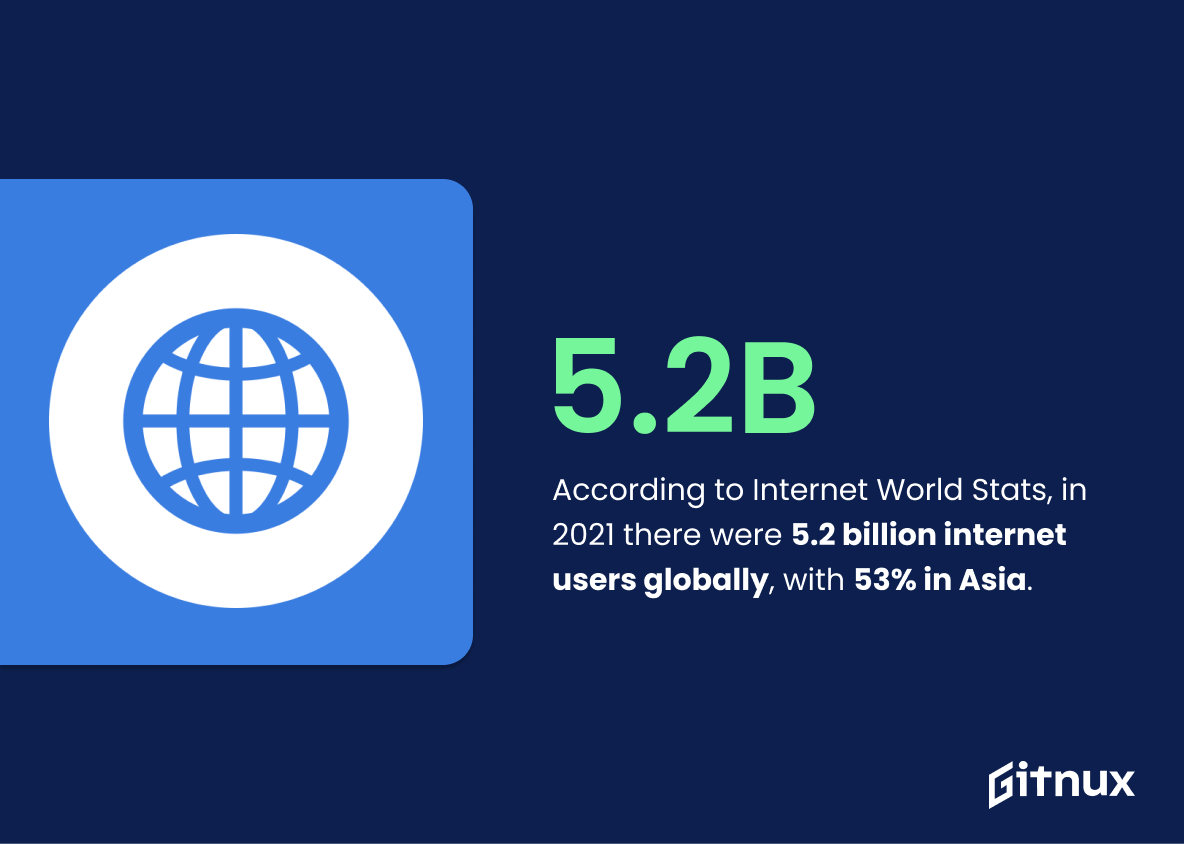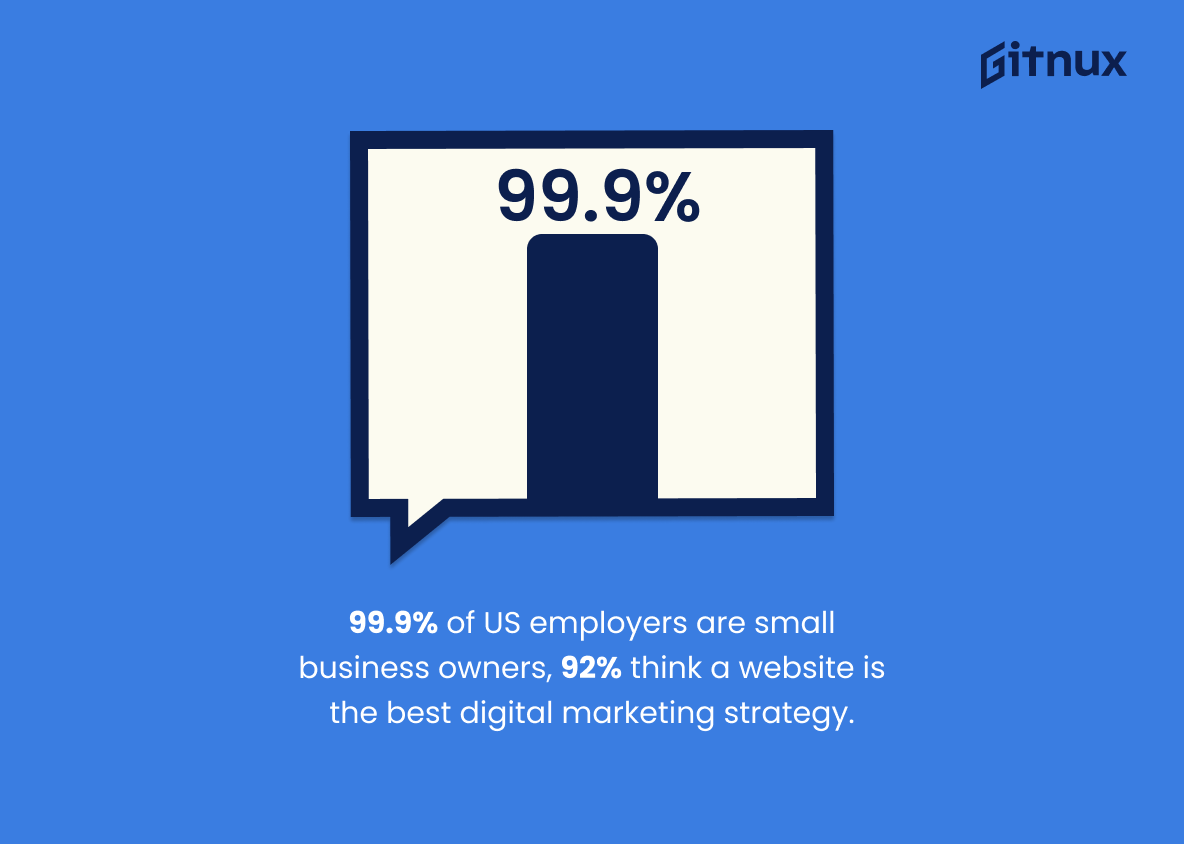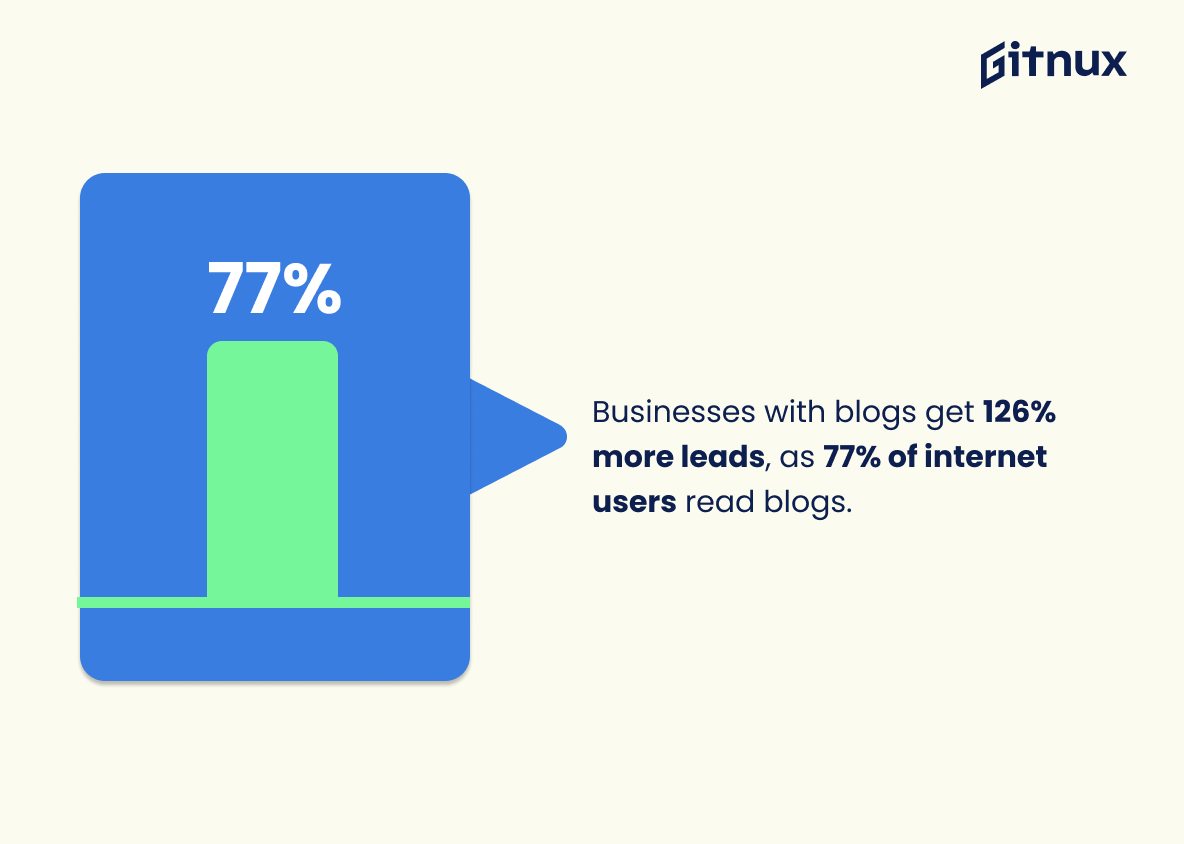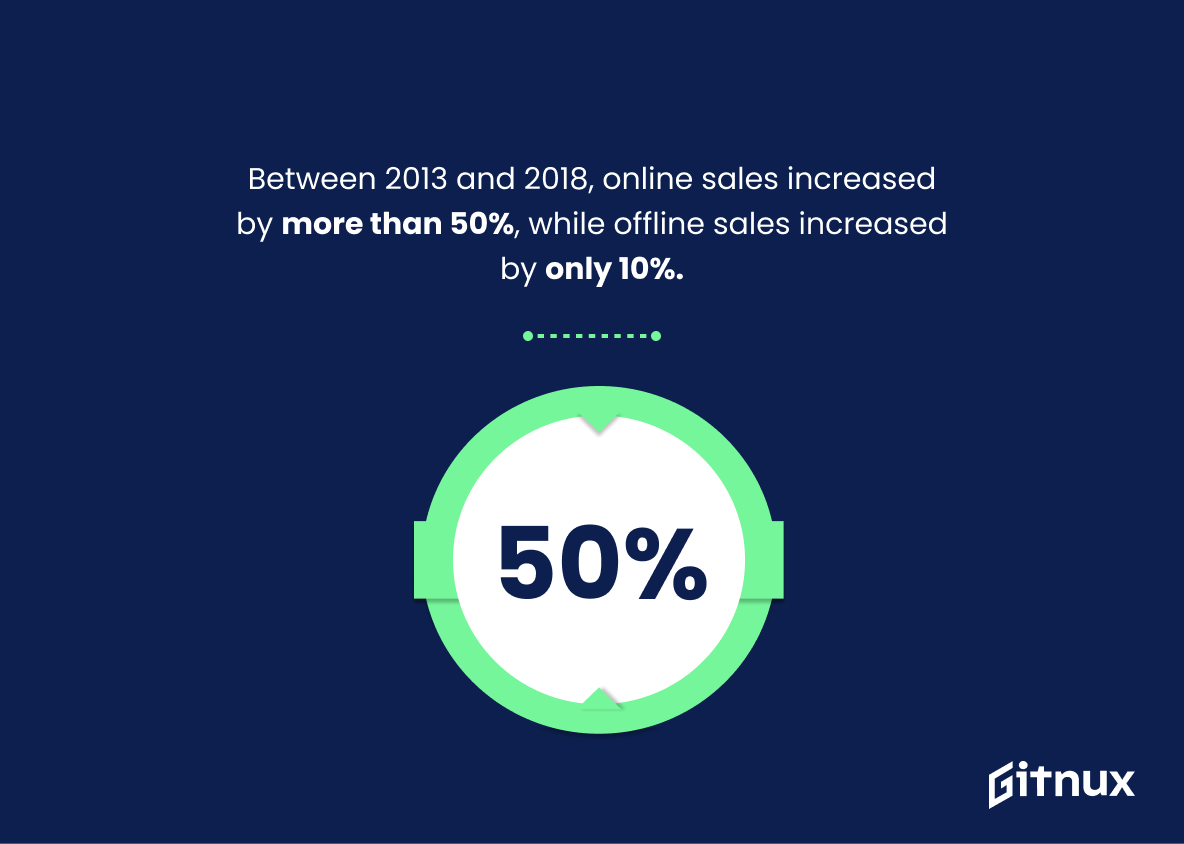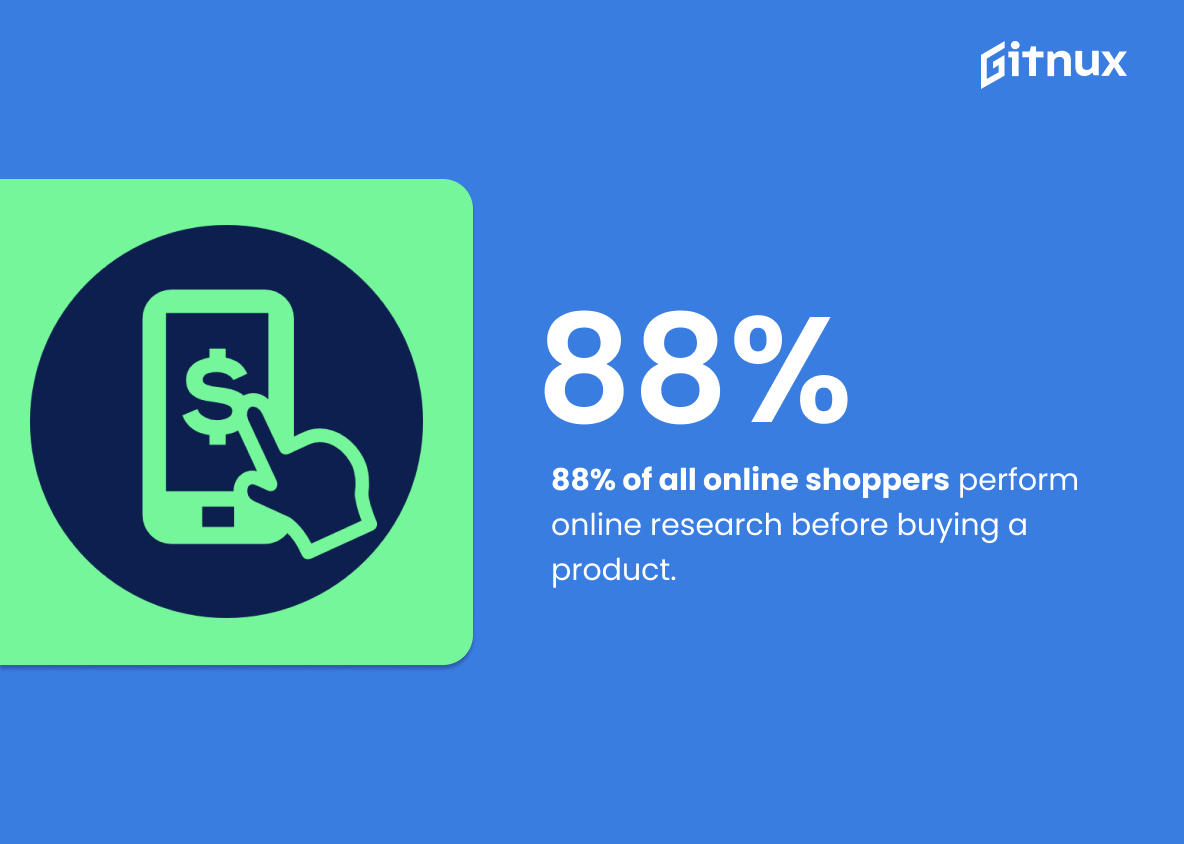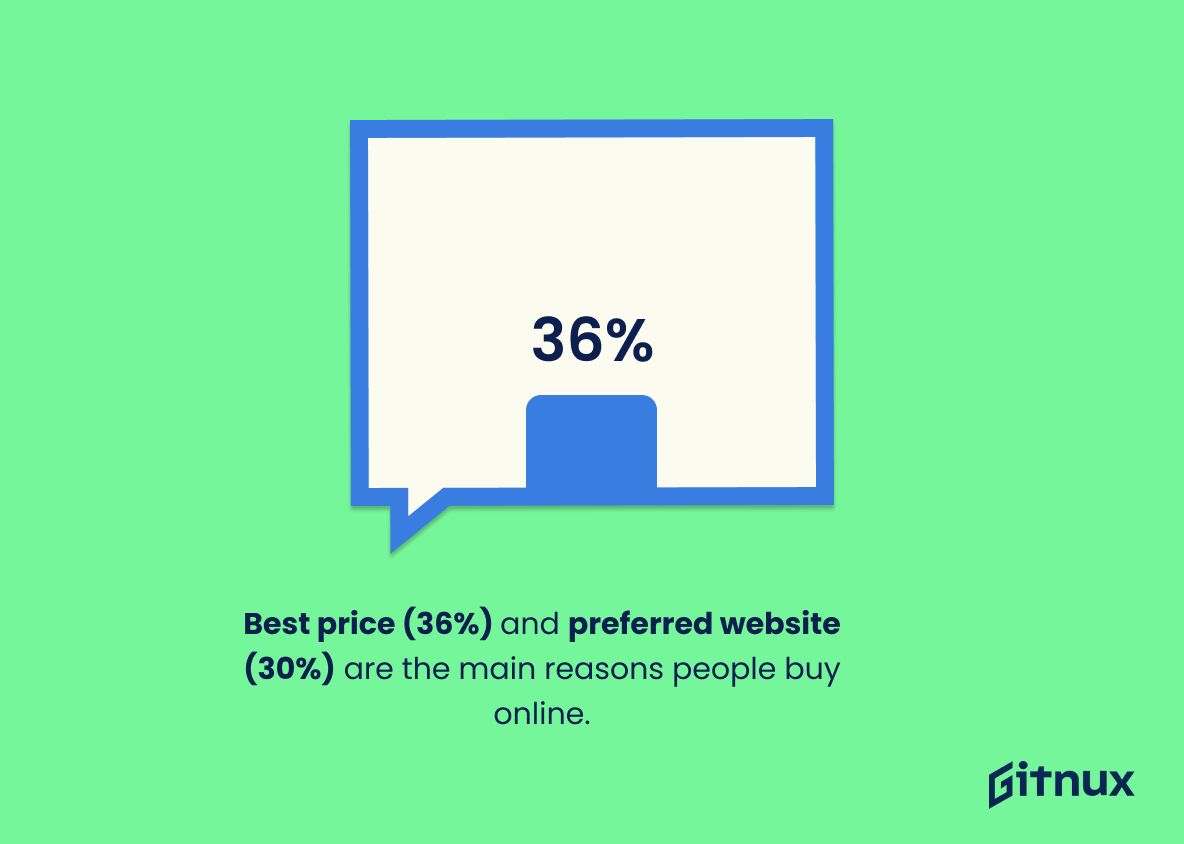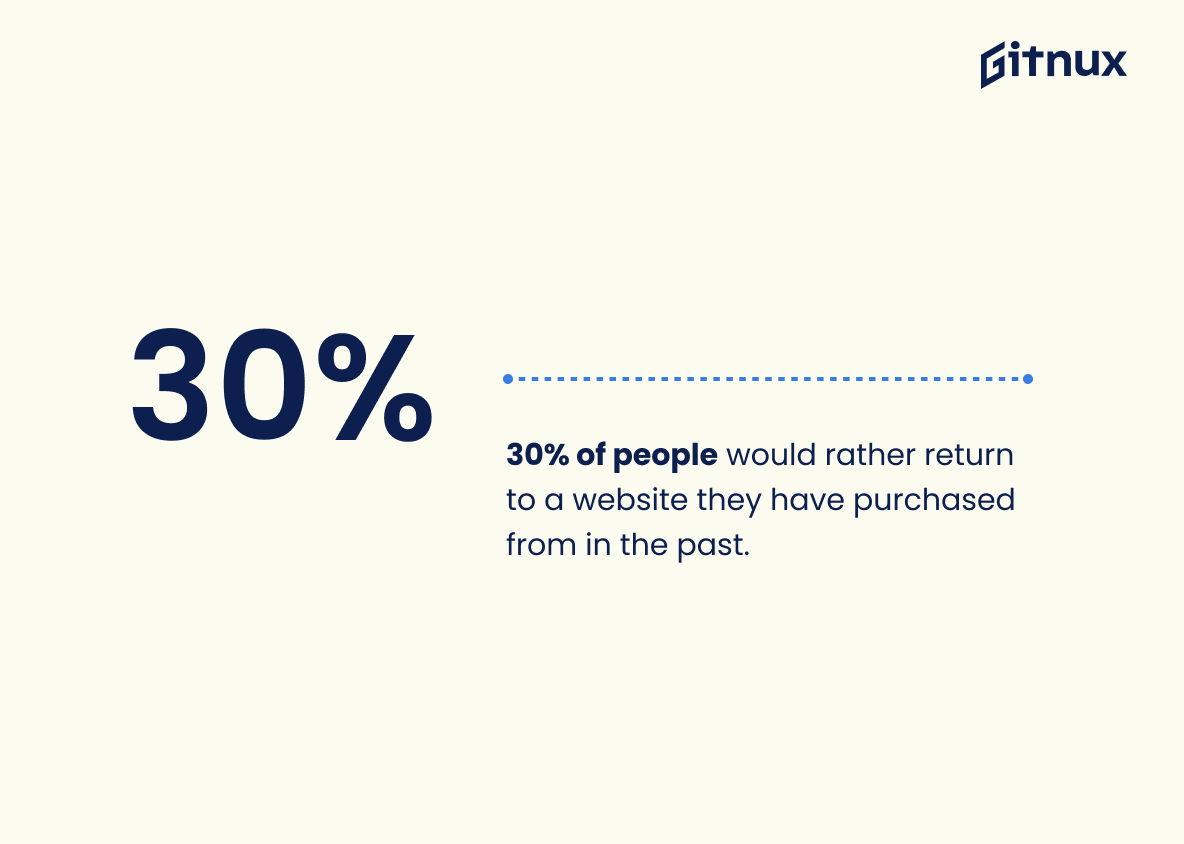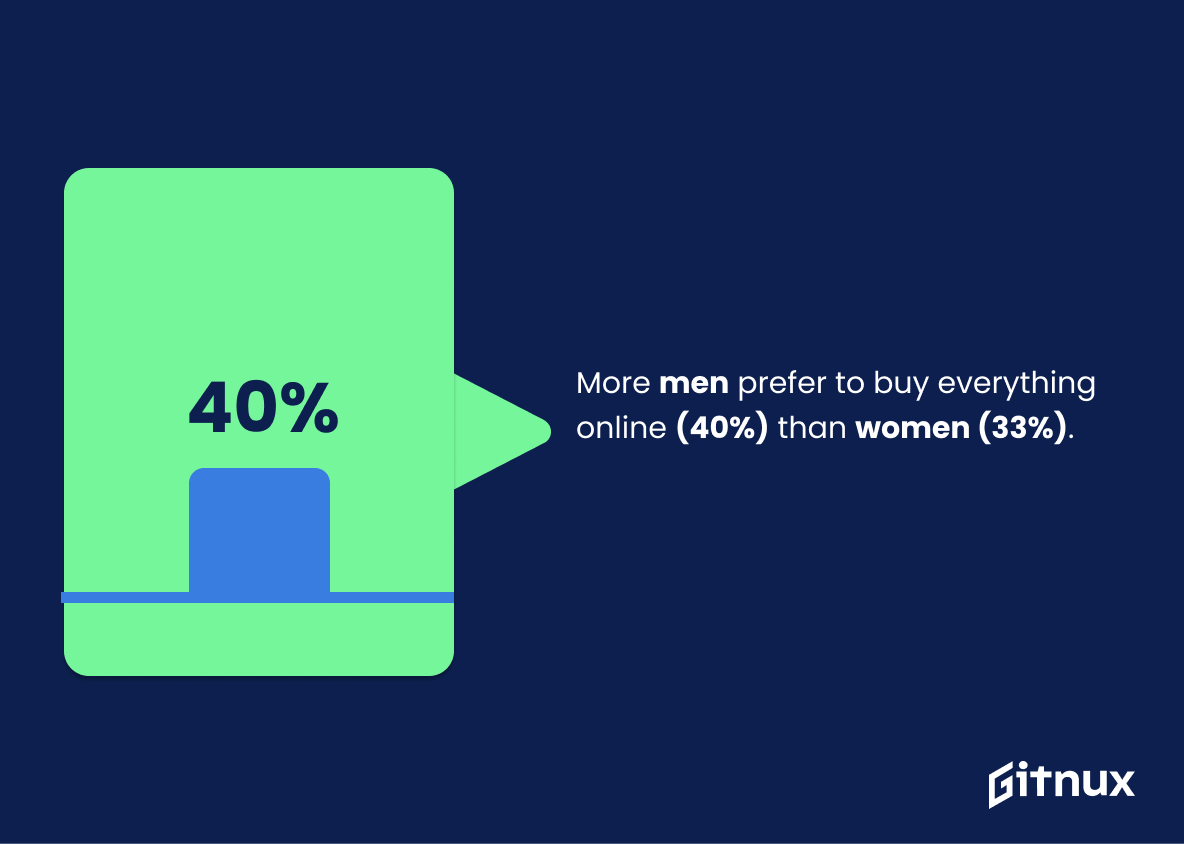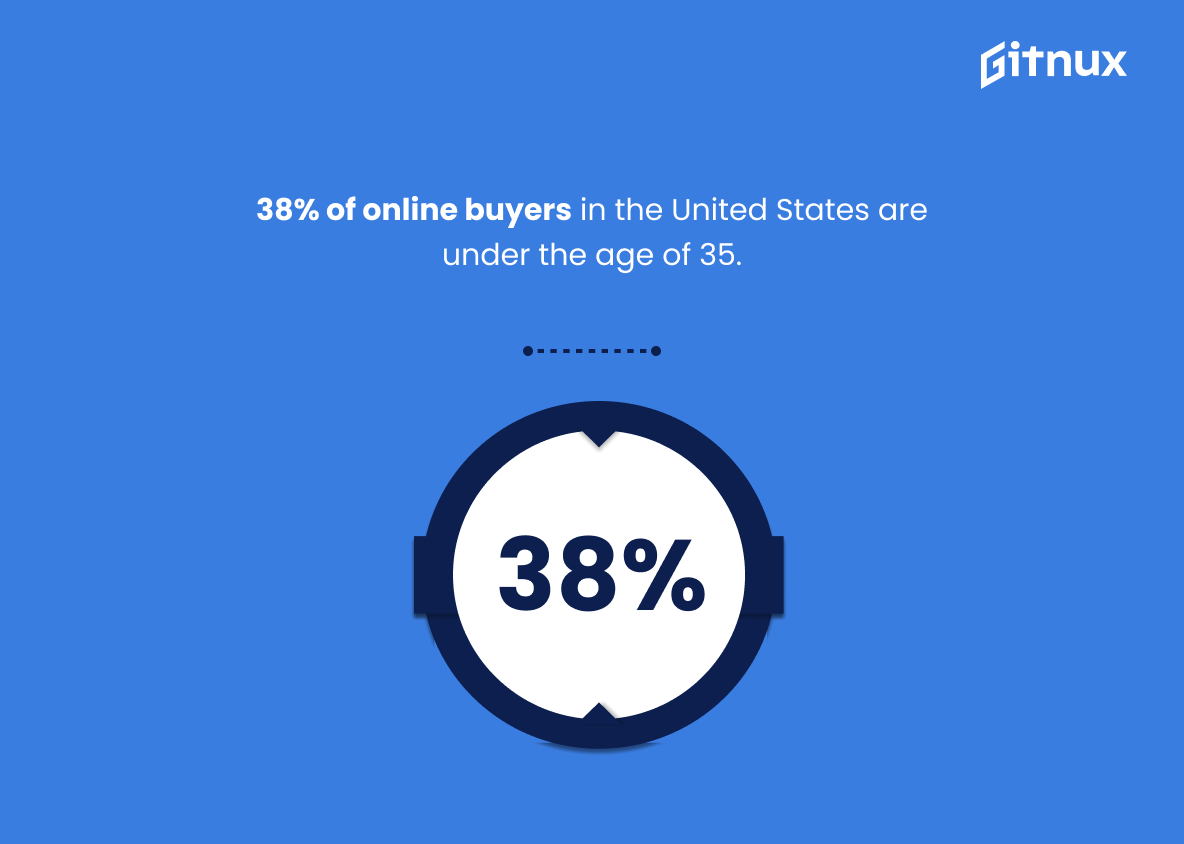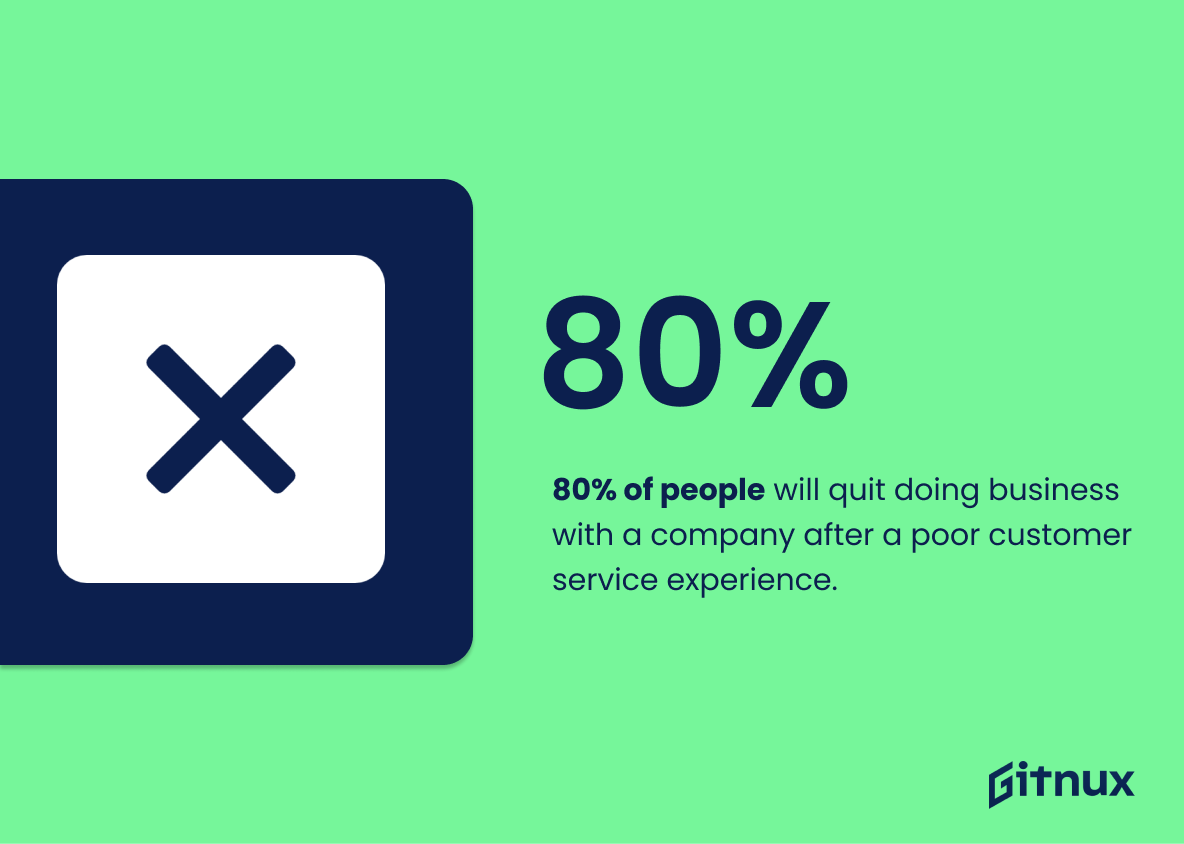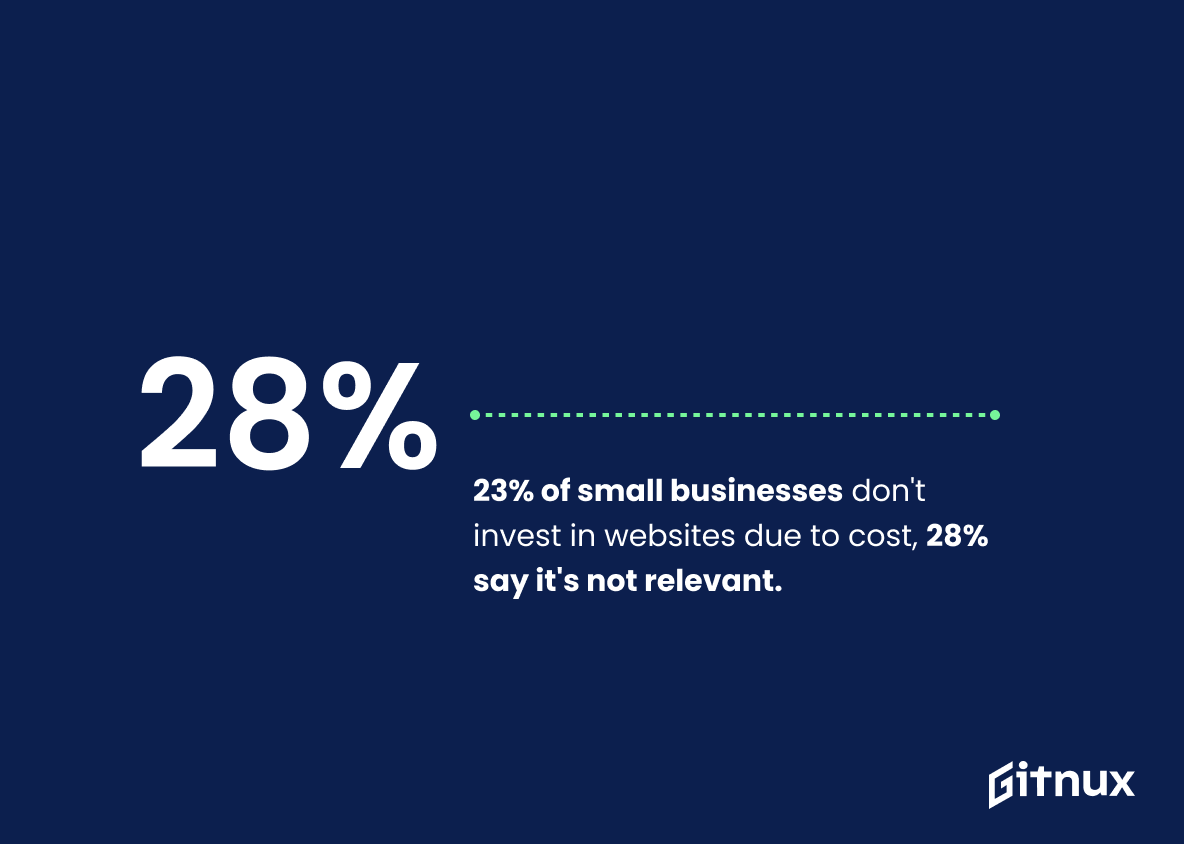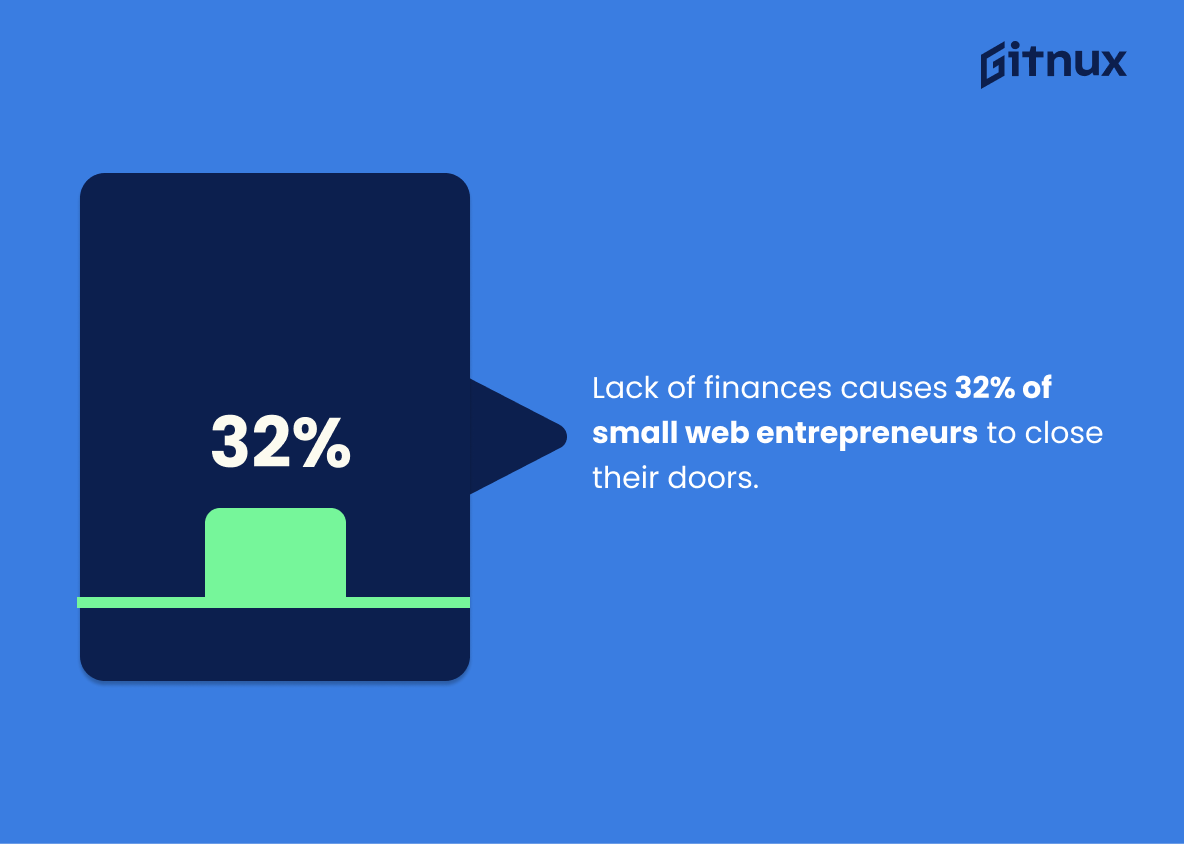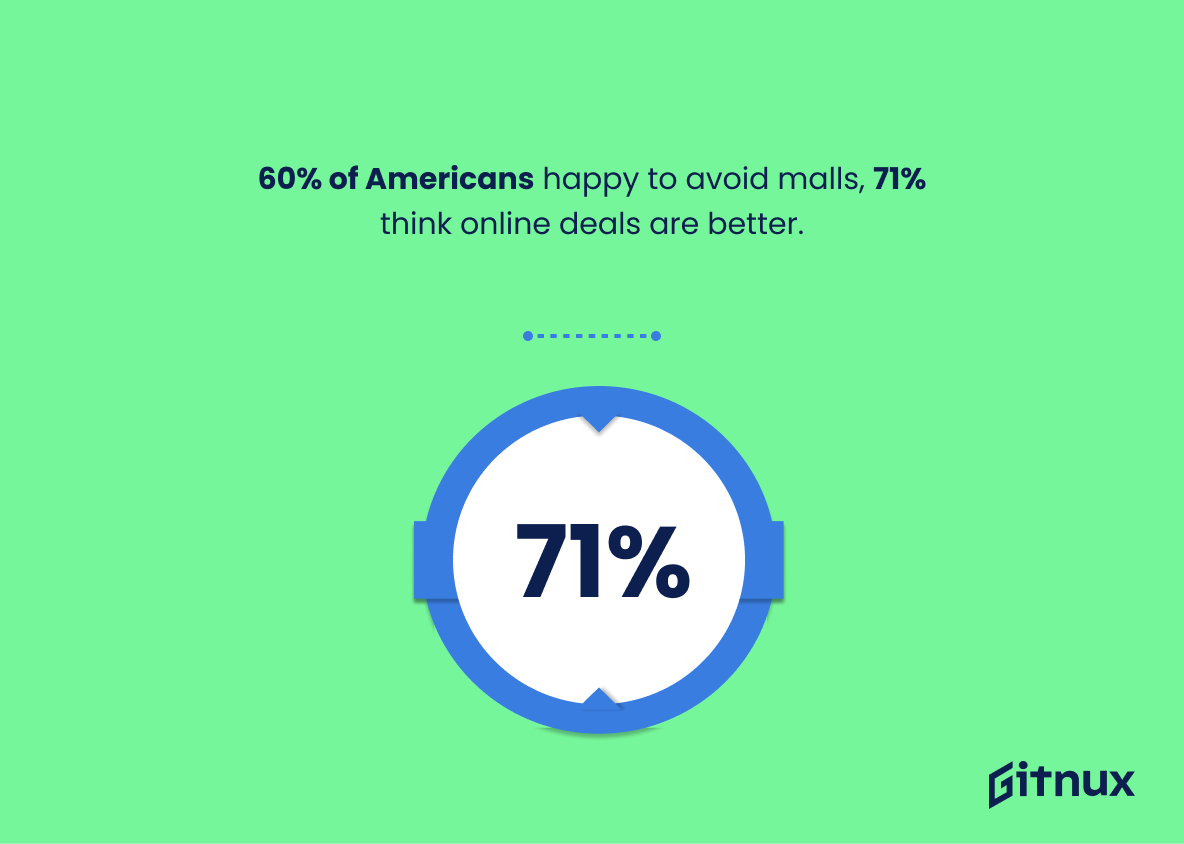Welcome to the world of online business statistics! Whether you are an online business owner or a person who is curious about the global economy, checking the latest statistics can be a great way to gain insight into the performance and success of businesses both big and small.
In this article, we will discuss the latest online business statistics and trends to help you understand the current state of the industry. We hope that analyzing data will help you to look at your business from different angles and improve your business performance.
Read about the best Online Business Ideas
Online Business: The Most Important Statistics
Only 10% of online businesses succeed on average, with 90% of them failing within the first 120 days.
60% of adult Americans are happy to know they won’t have to shop in a crowded mall or store. 71% of shoppers believe they will get a better deal online than in stores.
General online business statistics
According to Internet World Stats, in 2021 there were 5,168,780,607 internet users globally, with 53% of them located in Asia. Followed by Europe (14%), Africa (11.5%), and Latin America (9.6%).
1.79 billion people bought something online last year.
99.9% of US employers are small business owners, and 92% of them think that having a website is the most effective digital marketing strategy.
Only 64% of small businesses have their own website.
92% of small business owners do not regret starting their own brand.
It costs upwards of 5-6x as much to acquire a new customer than to retain an existing one.
Businesses with blogs get 126% higher lead growth, as a whopping 77% of internet users read blogs. Blogs also include benefits like 55% more page visits, 97% more inbound links, and 434% more indexed pages, among others.
29.7% of business conducted in the US is done online (just 10 years ago, only 19.3% of business was conducted online).
Between 2013 and 2018, online sales increased by more than 50%, while offline sales increased by only 10%.
Between 2019 and 2021, large eCommerce brands expanded by 50%.
88% of all online shoppers perform online research before buying a product.
70% of small-to-mid-sized businesses are investing more in their digital presence.
Online business statistics: consumer demographics and behavior
The main reasons behind people’s decision where to buy something online are the best price (36%), preferred website (30%), the best delivery options (17%), and stock availability (14%).
Reviews that consumers share online are generally positive. The vast majority (92%) of reviews are positive, 6% of feedback is neutral, and 2% is negative, as reported by KPMG. (PIE?)
30% of people would rather return to a website they have purchased from in the past.
62% of customers share online deals with their friends.
More men than women prefer to buy everything online: 40% of men aged 18-34 say they would ideally buy everything online, compared to only 33% of women in the same age group.
Despite having ultra-low incomes, Generation Z (18-24), spends the highest share of their income (9%) online.
38% of online buyers in the United States are under the age of 35.
48% of consumers who purchase items online are female.
Online business statistics: the main challenges
People pay a lot of attention to the level of customer service in online businesses. 80% of people claim they will quit doing business with a company after a poor customer service experience.
Even more, 75% of clients will demand help online within just 5 minutes, and if they don’t get it they simply leave the website.
Zippia reports, that the success rate for online businesses is only 10-20%. It means that only 10% of online businesses succeed on average, with 90% of them failing within the first 120 days. The success/failure that follows online businesses is the result of the focus/avoidance on the next important pieces: product displays, pricing, focus on mobile commerce, SEO/website, and customer service, among others.
35% of small businesses feel as though their business is too small to warrant a website.
23% of small businesses choose not to invest in a website due to the cost, and 28% report that a website simply isn’t relevant to their business.
35% of online business owners feel their eCommerce site will fail, because they can’t compete with major brands.
Lack of finances causes 32% of small web entrepreneurs to close their doors.
Statistics on online shopping
The current sales value of eCommerce retailers is 294 billion USD.
60% of adult Americans are happy to know they won’t have to shop in a crowded mall or store. 71% of shoppers believe they will get a better deal online than in stores.
If a website requires account creation at checkout, 23% of people will abandon their carts immediately.
81% of shoppers research a business online before making a purchase.
69% of Americans shop online, with 25% doing so at least once per month, while 15% shop online on a weekly basis.
The market leader in online shopping as a gateway holder is Paypal with 60% of the market share. Most purchases have been done by using Amazon (78%).
Conversions may be increased by 35% by improving the checkout process for customers.
53% of customers are also more inclined to buy if shipping is free.
Online business in different countries
87% of UK consumers have bought at least one product online in the last 12 months, and the United Kingdom is second only to Norway for making e-commerce purchases in Europe. Across the world, China and the US are the biggest online buyers, but other countries are catching up.
The UK is the third-largest eCommerce market for revenue per person on the globe, just behind the USA and China.
Online sales account for 2% of Australia’s GDP.
Every year, 58% of Canadians make over 7 internet purchases. Couples without children account for 42% of all online purchases in Canada.
Mobile eCommerce accounts for 45 % of all US eCommerce sales.
21% of UK consumers say they are shopping more frequently online.
Online business in the future
Total transaction value in the Digital Payments segment is projected to reach 9.47tn USD in 2023. Total transaction value is expected to show an annual growth rate (CAGR 2023-2027) of 11.79% resulting in a projected total amount of 14.79tn USD by 2027, according to Statista.
By 2040, it’s estimated that 95% of purchases will be through eCommerce.
70% of entrepreneurs with a business website expect to grow at least 25% in the next three to five years, compared to 64% of those without a site.
Digital payments are expected to increase by 15% in the 2020-2025 period.
The Chinese retail group Alibaba is the largest e-commerce retailer worldwide, with online sales valued at over 700 billion USD in 2022. However, according to Statista forecast, the Seattle-based e-commerce giant Amazon will surpass Alibaba in estimated sales by 2027, when Amazon will generate over 1.2 trillion USD in online sales.
According to Shopify, 2 years ago, only 17.8% of sales were made from online purchases. That number is expected to reach 20.8% in 2023, and 23% by 2025.
70% of people think that digital payment methods will overtake cash and cards by 2030.
See the best Payment Processing Software
Supplementary Statistics
In 2021, there are more than 24 million eCommerce websites globally.
This highlights the immense potential of online business and the vast opportunities available to entrepreneurs. It also serves as a reminder of the importance of staying ahead of the competition and staying up-to-date with the latest trends in the industry.
By 2023, the number of global digital buyers is expected to increase to 2.14 billion.
With the number of digital buyers expected to reach 2.14 billion by 2023, it is evident that the online business industry is becoming increasingly popular and profitable. This is an important statistic for any business looking to capitalize on the growing digital market.
In 2020, the global online business-to-business (B2B) market size was valued at $9.6 trillion.
The statistic is a testament to the sheer size and scope of the online B2B market. It serves as a reminder of the immense potential of the digital economy and the opportunities it presents for businesses to expand their reach and increase their profits. It also highlights the importance of staying up-to-date with the latest trends and developments in the online B2B space in order to remain competitive.
Mobile eCommerce is projected to reach $3.56 trillion in 2021, making up 72.9% of total ecommerce sales.
With mobile eCommerce projected to make up nearly three-quarters of total eCommerce sales in 2021, it is clear that businesses must prioritize mobile-friendly strategies if they want to remain competitive.
In 2021, the average eCommerce conversion rate is 2.86% globally.
Knowing the average eCommerce conversion rate can help businesses understand how well their website is performing and what changes they can make to improve it. This information is invaluable for any business looking to maximize their online presence and increase their profits.
Video content on landing pages can increase conversions by 80% or more.
With an increase of 80% or more in conversions, it is clear that video content can be a powerful tool for businesses looking to maximize their online presence. This statistic is especially relevant for businesses looking to increase their online visibility and reach more customers. By incorporating video content into their landing pages, businesses can significantly increase their conversions and reach more potential customers.
In 2021, the most popular online sales category is fashion with a 59.4% share in the market.
It is a powerful reminder that fashion is a major player in the online business world, and should be taken into account when creating a blog post about online business statistics.
Online retail sales are expected to reach $6.54 trillion by 2023.
This demos that the online retail market is expected to expand significantly, providing a lucrative opportunity for businesses to capitalize on. With the right strategies and investments, online retailers can take advantage of this growth and position themselves for success.
85% of consumers trust online reviews as much as personal recommendations.
The majority of consumers are placing a great deal of trust in the opinions of others when it comes to making decisions about products and services. This is an important factor for businesses to consider when creating their online presence, as it demonstrates the importance of having a strong online reputation and the potential impact it can have on their bottom line.
67% of consumers said they’ve made a purchase following a social media advertisement.
Most consumers are responding to social media ads and making purchases as a result. This is an invaluable insight for any online business looking to maximize their marketing efforts and reach more customers.
By 2021, online businesses are projected to lose $6.2 billion every year due to false declines.
With an estimated loss of $6.2 billion annually, it is clear that false declines can have a significant impact on the bottom line of any online business. As such, it is essential for online businesses to take steps to reduce the risk of false declines and ensure that their customers can make purchases without any issues.
In 2020, the number of Shopify merchants passed the 1 million mark.
More and more entrepreneurs are turning to Shopify to launch their businesses, and the platform is providing them with the tools and resources they need to succeed. This milestone is a major milestone for the online business world, and it’s a great reminder of the potential of e-commerce.
71% of online customers expressed frustration when a shopping experience was impersonal.
This highlights the need for businesses to create a more personalized experience for their customers, as it can have a significant impact on customer satisfaction. By understanding the importance of personalization, businesses can create a more enjoyable and successful online shopping experience for their customers.
63% of online customers are more likely to make a purchase from a website that personalizes their experience.
Customers are more likely to make a purchase when they feel that their individual needs are being taken into account. By understanding this statistic, online businesses can ensure that they are providing the best possible customer experience, which can lead to increased sales and customer loyalty.
64% of online customers expect online businesses to offer live chat support, with 33% valuing this channel the most.
The customers are increasingly expecting businesses to provide this service, with a third of them placing the highest value on it. This highlights the importance of offering live chat support for online businesses, as it could be the difference between a successful and unsuccessful venture.
40% of online shoppers express a preference for the option of buying online and picking up in-store.
Online shoppers are increasingly looking for convenience when it comes to their shopping experience. It shows that customers are willing to take advantage of the convenience of online shopping, but also want the option of being able to pick up their purchases in-store. This is an important insight for online businesses, as it suggests that they should consider offering this option to their customers in order to remain competitive.
In 2019, there were nearly 2 million active sellers on the Amazon marketplace.
This demonstrates the potential for online businesses to reach a vast number of customers and to make a significant impact on the global economy. It also highlights the importance of understanding the dynamics of the online marketplace and how to best leverage it for success.
China leads online business, with Alibaba Group’s Tmall Global reaching nearly 779.9 billion yuan ($121.1 billion) in sales in 2020.
China is leading the way in the online business sector, which serves as a reminder of the potential for success that can be achieved through digital commerce.
Conclusion
Online business statistics can be an invaluable source of information for businesses of all sizes. With accurate data, managers can make informed decisions and plan for the future. By taking into account the ever-evolving market and customer behavior, statistics can provide a comprehensive view of business performance and upcoming trends.
As you can see, people tend to use technological tools for buying all they need online instead of spending time queuing in shops, so starting an online business will give you many advantages. Of course, success won’t happen overnight, but by developing a business plan and learning how to effectively manage and promote your business, you can successfully launch and grow a profitable online business.
Resources
BloggersIdeas: “Top Online Business Statistics 2023: The Ultimate List of Online Business Statistics”, cited February 2023. (Source)
Content Marketing Institute: “9 Stats That Will Make You Want to Invest in Content Marketing”, cited February 2023. (Source)
Devrix: “100+ Small Business Marketing Statistics and Trends in 2022 and Beyond”, cited February 2023. (Source)
FinancesOnline: “64 Key Online Payments Statistics: 2021 Market Share & Data Analysis”, cited February 2023. (Source)
FirstSiteGuide: “Online (Internet) Business Stats and Facts in 2023”, cited February 2023. (Source)
GoSimpleTax: “Online Business Statistics”, cited February 2023. (Source)
Insider: “7 Statistics About E-Commerce Shoppers That Reveal Why Many Consumer Stereotypes Don’t Apply Online”, cited February 2023. (Source)
Internet World Stats: “Internet Usage Statistics: World Internet Users and 2023 Population Stats”, cited February 2023. (Source)
KPMG: “The truth about online consumers”, cited February 2023. (Source)
Nasdaq: “UK Online Shopping and E-Commerce Statistics for 2017”, cited February 2023. (Source)
nChannel: “Retail Data: 100 Stats About Retail, eCommerce & Digital Marketing”, cited February 2023. (Source)
Shopify: “Global Ecommerce Explained: Stats and Trends to Watch”, cited February 2023. (Source)
Statista: “Digital Payments – Worldwide”, cited February 2023. (Source)
Statista: “Retail e-commerce sales worldwide from 2014 to 2026”, cited February 2023. (Source)
WPForms: “The Ultimate List of Online Business Statistics (2023)”, cited February 2023. (Source)
Zippia: “What Percentage Of E-commerce Start-up Businesses Fail?”, cited February 2023. (Source)
Zippia: “20 Incredible Online Business Statistics [2023]”, cited February 2023. (Source)
ZipDo, cited June 2023: Online Business Statistics
